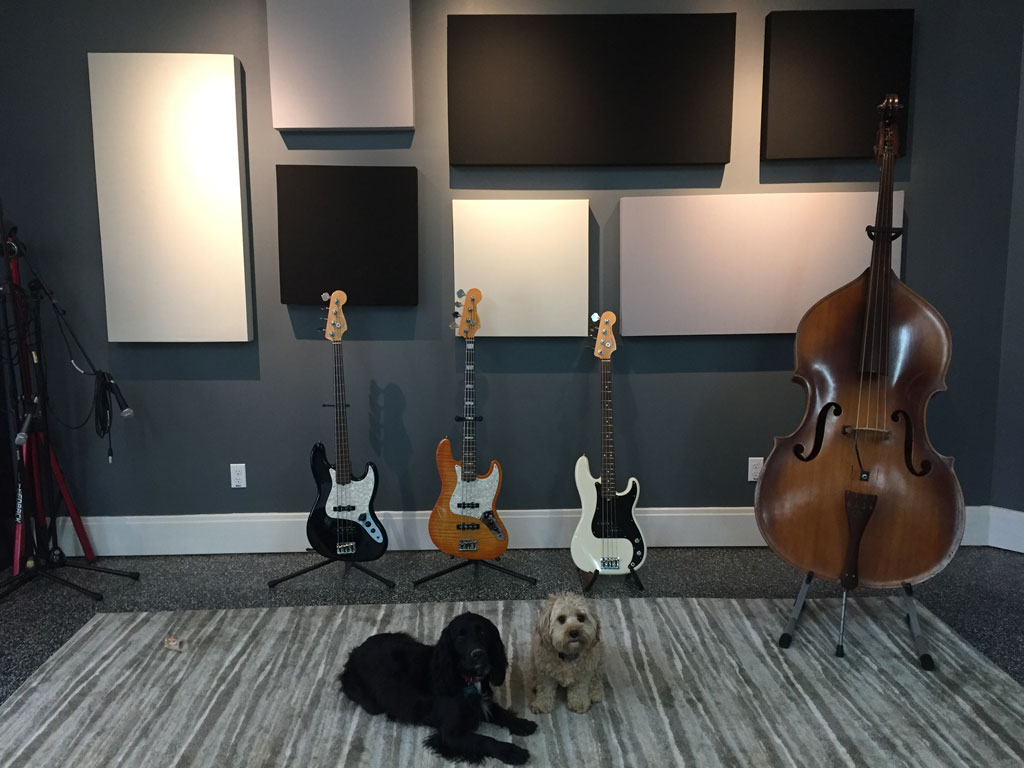Installing acoustic panels can dramatically improve sound quality in any space, from a recording studio to a home theater or home office. But for many, the question is simple: how do you hang acoustic panels? This guide will walk you through everything you need to know about mounting acoustic panels and the other products we offer, including tools, techniques, and best practices for securing your sound absorbing treatments effectively and safely. The basic idea is that each panel hangs like a picture frame would, but let’s take a closer look.
Basic Principles of Hanging Acoustic Panels
Acoustic panels are designed to absorb sound, particularly mid and high frequencies for thinner panels, and help reduce reverberation and reflections in a room. When properly placed, they manage sound waves, reduce reverb, and enhance clarity. Thicker panels also improve low frequency accuracy and bass performance. Whether you’re treating a home studio, home theater, or DIY acoustic project, how you hang your panels directly impacts their performance.
At GIK Acoustics, our panels include hanging hardware for the back of the panel, making them as easy to mount as picture frames. Depending on the panel, this may include sawtooth hangers (for most of our products), or picture wire (for a few others). You will need to get fasteners appropriate for your surface.
How to Hang Acoustic Panels on Drywall
If you’re installing most types of acoustic panels on drywall, mechanical fasteners like wall anchors and screws are the most secure and effective option. These are essential for heavier panels like bass traps or thicker absorption panels, which require solid support. Simply:
- Mark the location on the wall
- Drill pilot holes
- Install appropriate anchors or screws
- Install the included hardware onto the back of the panel, and hang onto the fastener in the wall.
This approach ensures safety, longevity, and maximum performance.
What About Hanging Without Drilling?
While GIK Acoustics always recommends using fasteners, we understand that some situations—like rentals or delicate surfaces—may make drilling undesirable. It is sometimes possible to mount lightweight panels using heavy-duty velcro or command strips or hooks. We do not recommend attempting to mount our panels with construction adhesive.
However, please note: these methods (to avoid drilling holes) are not ideal for high quality treatments, either our products or well-built DIY acoustic panels, with wooden frames or fiberglass/mineral wool cores, unlike acoustic foam panels designed to be glued to a surface. These methods do not provide long-term reliability or safety for heavier panels and are not recommended for standard GIK products. Always consult a GIK Acoustics Designer before attempting non-standard mounting solutions.
Hanging Panels on Doors
You can install acoustic wall panels on doors—especially solid-core ones—to reduce sound reflections in small or irregularly shaped rooms. If doing so:
- Ensure the door can still open and close fully
- Use appropriate fasteners for the door material
- Check local building codes for door access requirements in public spaces
This is a great solution for installations in home studios or multipurpose rooms where the doors are at a critical treatment location like an early reflection zone. If the door is not in a critical location then often the best choice is to put the panel somewhere else in the room where mounting will be simpler.
Where to Hang Acoustic Panels
Strategic Placement Matters
To achieve the best results, prioritize placing panels at first reflection points, especially on the side walls and ceiling between speakers and the listening position. Treating the back wall and front wall also helps manage direct sound and reflections. Corners are also a great place for thicker bass traps in music or audio rooms.
General Placement Guidelines:
- Side walls at ear level in the listening position
- Ceiling panels above mixing or listening areas, between the listener and the speakers
- Front wall behind speakers for thicker bass traps
- Rear wall to absorb late-arriving sound waves. This is also a great place for bass traps and diffusers.
What About Air Gaps?
Leaving a small air gap (2–4”) behind the panel can increase low-frequency performance. But if you have space for a gap, you’ll get better results from using thicker panels mounted flush to the wall. This is particularly important in small rooms or where bass traps are needed.
Soundproofing vs. Acoustic Treatment
Acoustic treatment improves the sound within a room using absorbers, diffusion panels, and bass traps. Soundproofing, on the other hand, aims to block sound transmission through walls and ceilings—usually requiring construction, not just panel installation.
While acoustic wall panels and sound absorbing treatments help reduce reverberation, they do not fully soundproof a room. They can help muffle sound under some conditions. Still, these panels make a noticeable difference in sound quality, especially in recording studios, home theaters, or work-from-home setups.
Why Sound Control Matters
Noise affects more than just your ears—it can impact your focus, mood, and health. Reducing ambient noise:
- Lowers stress and anxiety
- Makes it easier to concentrate or relax
- Improves the enjoyment of music, movies, or speech
Proper room acoustics benefit every space. Whether it’s a recording studio, home theater, or DIY project, treating your space with absorption panels, bass traps, and diffusion enhances both functionality and comfort.
Final Thoughts
Now that you know how to hang acoustic panels, remember that placement, secure mounting, and thoughtful design are key. Avoid shortcuts that may damage panels or underperform over time. If you’re unsure about hanging acoustic panels or where to start, the team at GIK Acoustics is ready to help.
Need help figuring out how to hang sound panels or where to place them for maximum effectiveness? Fill out our Free Acoustic Advice Form to get started today.





GIK Giveaway Viral Video Contest 2024
Room EQ Wizard TUTORIAL
How to set up and use REW In this video we show you how [...]
DIFFUSION Concepts Explained
How Acoustic Diffusers Work And Which One Is Right For You In this video [...]
Jan
The GIK Acoustic Advice
Get Your Room Sound Right For FREE! In this video we are giving a [...]
Jan
Designer Tips: The Significance of “Clouds” with Mike Major
When people reach out to us at GIK for acoustic advice, we never have any [...]
Jun
Designer Tips: The Importance of Coverage Area with James Lindenschmidt
The most important factor in acoustic treatment performance is coverage area. Or more specifically, the [...]
May
Designer Tips: Home Theaters and Acoustic Balance with John Dykstra
Without fail, one of the first things our clients say to us when we begin [...]
May
Summer Giveaway 2021 Vote
The GIK Acoustics Summer Giveaway Photo Contest 2021 invited customers to submit photos illustrating how [...]
Aug